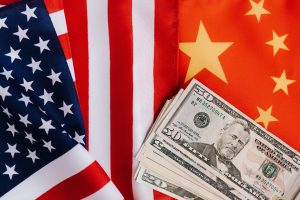In the ever-shifting landscape of global economics, staying ahead of the curve is imperative for investors seeking to make informed decisions. As we venture into 2023, the financial world remains marked by uncertainty, driven by an array of factors ranging from geopolitical tensions to the lingering effects of the COVID-19 pandemic. In this report, we will delve into the key economic trends that investors should keep a keen eye on in 2023.
1. Inflationary Pressures:
One of the most prominent concerns on investors’ minds this year is inflation. Rising consumer prices, fueled by supply chain disruptions, increased demand, and fiscal stimulus measures, have already shaken markets. As central banks contemplate policy shifts, investors should monitor inflation rates, as they can have profound effects on asset valuations and investment strategies.

2. Geopolitical Uncertainty:
Geopolitical tensions can send shockwaves through financial markets. Whether it’s trade disputes, political upheaval, or international conflicts, investors should be prepared for sudden disruptions. Tensions between economic giants like the United States and China could escalate or de-escalate rapidly, leading to significant market fluctuations.
3. Sustainable Investing:
Environmental, Social, and Governance (ESG) criteria are increasingly guiding investment decisions. As governments worldwide adopt stricter environmental regulations, green investments are gaining momentum. Investors should consider sustainable opportunities, as these may offer long-term growth potential and align with evolving consumer preferences.
4. Tech Innovation:
Technology continues to be a driving force in the global economy. Investors should watch for advancements in artificial intelligence, blockchain, and clean energy technologies. These sectors are poised for rapid growth and have the potential to disrupt traditional industries.
5. Supply Chain Resilience:
Supply chain disruptions have exposed vulnerabilities in various industries. Investors should monitor how companies adapt to these challenges. Those with resilient supply chains and innovative solutions could offer attractive investment opportunities.
6. Central Bank Policies:
Keep a close watch on central bank decisions. As economies recover from the pandemic, central banks may start tapering their stimulus measures and raising interest rates. These shifts can influence asset prices, particularly in bond and equity markets.
7. Cryptocurrency Evolution:
Cryptocurrencies have moved from being speculative assets to gaining broader acceptance. Investors should follow regulatory developments, technological advancements, and adoption trends in the cryptocurrency space. As digital currencies become more integrated into the financial system, they may offer diversification opportunities.
8. Infrastructure Investments:
Governments around the world are prioritizing infrastructure projects to stimulate economic growth. Investors should consider the potential impact of these investments on various sectors, such as construction, materials, and transportation.
9. Demographic Changes:
Changing demographics, including an aging population in many countries, can have far-reaching economic consequences. Investors should assess how these shifts affect healthcare, retirement, and consumer spending patterns.
10. Pandemic Resilience:
While the worst of the COVID-19 pandemic may be behind us, its aftermath lingers. Investors should remain vigilant about emerging variants, vaccine rollout progress, and potential future disruptions to global supply chains and travel.
In conclusion, 2023 promises to be a year filled with both opportunities and challenges for investors. Staying well-informed about these economic trends and adapting investment strategies accordingly will be crucial in navigating the financial landscape successfully. Remember that prudent and diversified investments remain the bedrock of any sound investment strategy, and seeking professional financial advice is always a wise move in these dynamic times.












